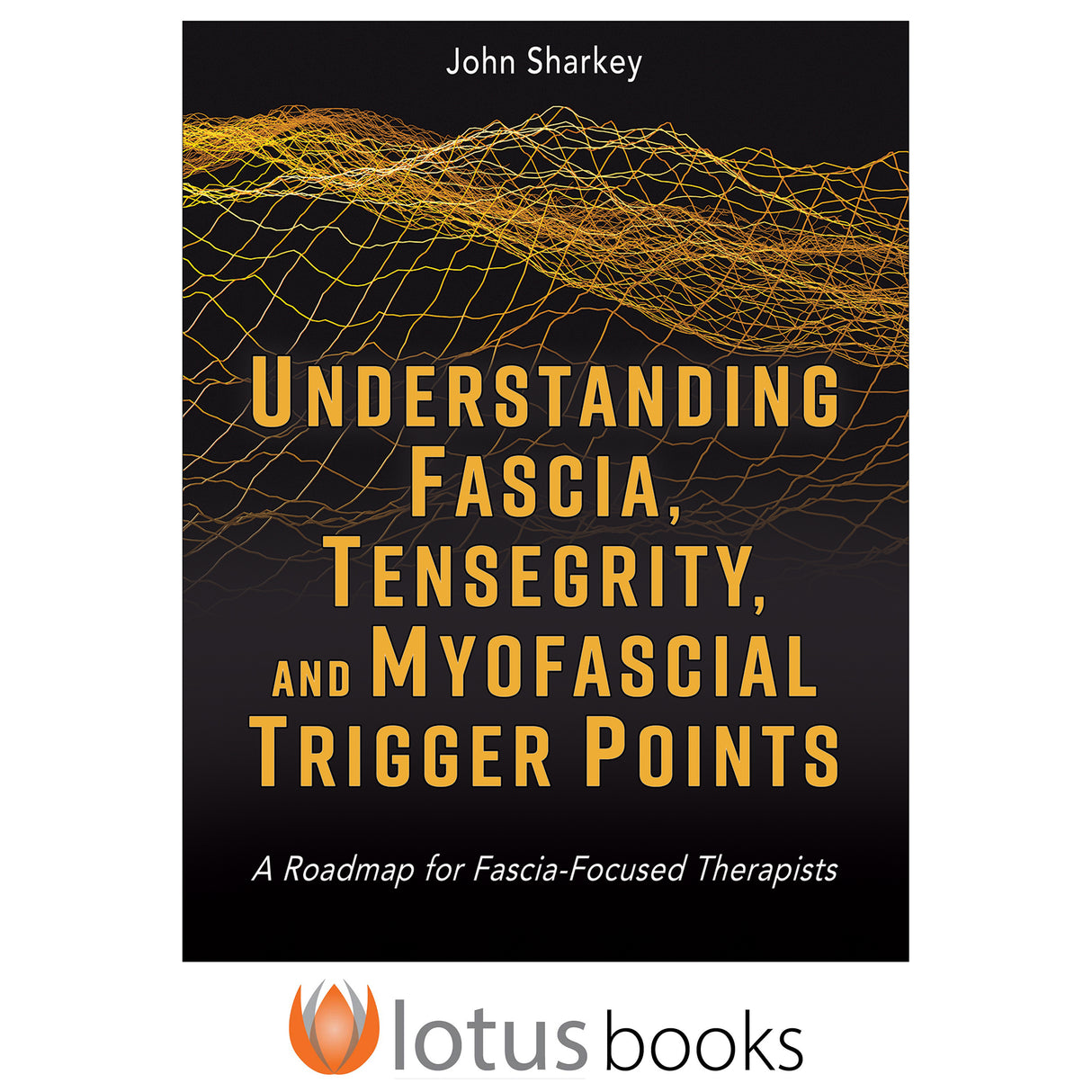Understanding Fascia, Tensegrity, and Myofascial Trigger Points
A Roadmap for Fascia-Focused Therapists
Author: John Sharkey
$41.95 CAD
Understanding Fascia, Tensegrity, and Myofascial Trigger Points elucidates the fundamental principles and concepts underpinning fascia-focused therapies. Fascia science expert John Sharkey offers analogies, anecdotes, comparisons, and language that simplify complex topics for fascia-focused therapists and movement practitioners. The text is complemented by rich photography, detailed anatomy drawings, and an analysis of referred pain patterns.
PART I of the text lays down a foundation of knowledge, helping the reader understand the relevant anatomy and how to navigate everything that follows. PART II is practical and provides the keys to understanding why fascia affects therapeutic practice—specifically, through myofascial trigger points and site-specific fascia tuning pegs. This section offers a variety of applied techniques and treatment protocols. Finally, PART III supplies a clearly illustrated quick reference to skeletal muscles and pain referral patterns, divided by region: face, head, and neck; trunk; shoulder and upper arm; forearm and hand; hip and thigh; and leg and foot.
Throughout the text, the author offers his insights in sidebars and comment sections. Tables break down important knowledge into easily digestible information. At the end of the text, there are a list of abbreviations, references, and an index to help the reader navigate the pages.
Understanding Fascia, Tensegrity, and Myofascial Trigger Points combines groundbreaking research with a comprehensive therapeutic approach. The information provided can be seamlessly integrated into any school of manual or movement therapies, regardless of the specific discipline. Students of health care professions will appreciate the precise anatomy and the accompanying artwork and diagrams, which simplify complex concepts.
Audience
Physical therapists and physiotherapists, osteopaths, chiropractors, neuromuscular therapists, soft-tissue therapists, and sports massage therapists, as well as students in these fields.Introduction
Why This Book Is Important for Fascia-Focused Therapists
The History and Genesis of Fascia-Focused Therapies
MTrPs—Welcome Home
Part I. Theory
Chapter 1. Fascia and Tensegrity—A Fasciategrity Perspective
Chapter 2. Integrated “Anatomy for the Twenty-First Century”—Building Blocks
Chapter 3. Muscles, Tensegrity, Fascia, and the Kinetic System
Part II. Practice
Chapter 4. Myofascial Trigger Points—Assessment and Treatment
Chapter 5. Patient Assessment and Treatment Protocols
Part III. Review of the Major Skeletal Muscles and Referred Pain Patterns
Chapter 6. Muscles of the Face, Head, and Neck
Chapter 7. Muscles of the Trunk
Chapter 8. Muscles of the Shoulder and Upper Arm
Chapter 9. Muscles of the Forearm and Hand
Chapter 10. Muscles of the Hip and Thigh
Chapter 11. Muscles of the Leg and Foot









